Our tool for managing your permission to our use of cookies is temporarily offline. Therefore some functionality is missing.
OVERVIEW OF THE BMW M SERIES.
This combination of technical perfection with highly emotional sports performance will raise your heart rate. BMW M models are real sports cars. From saloons and coupés to SUVs, racing technology such as M sports suspension, engines, and typical M tuning make these sporty vehicles the ultimate blend of luxury and performance.

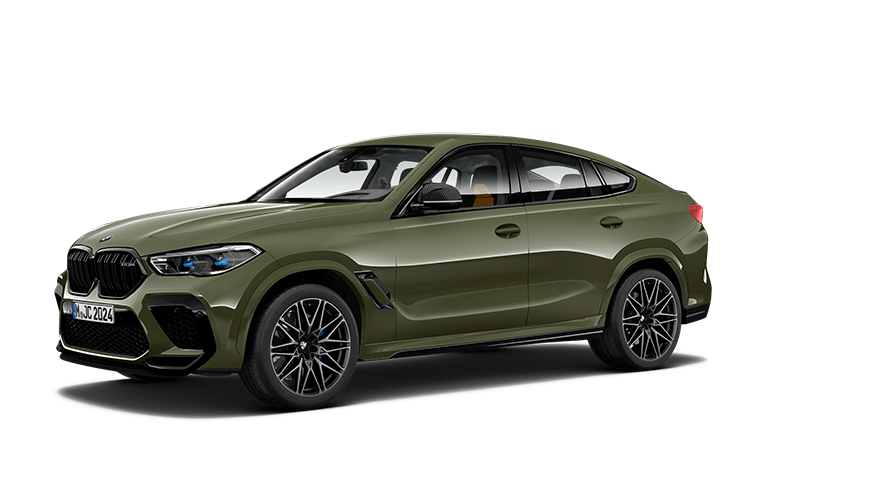
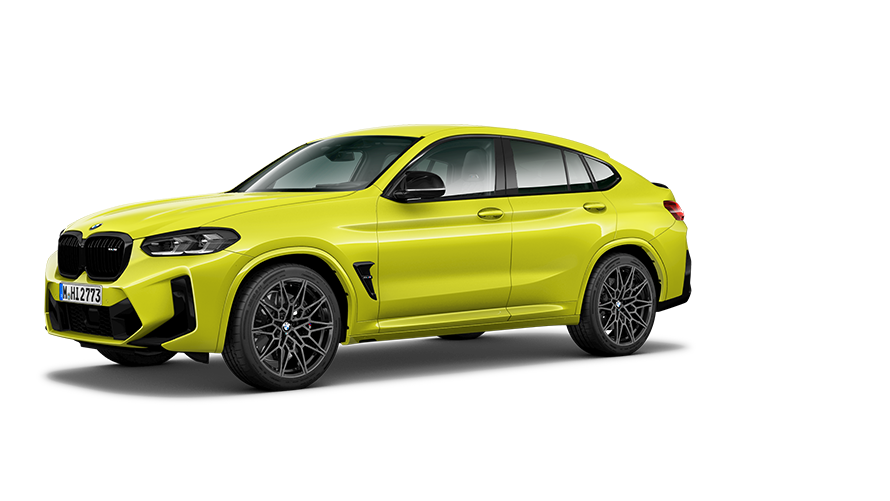
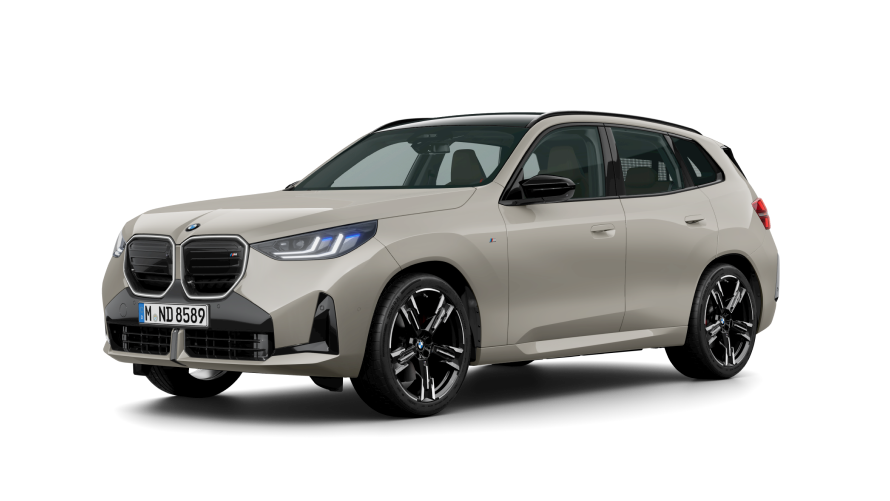
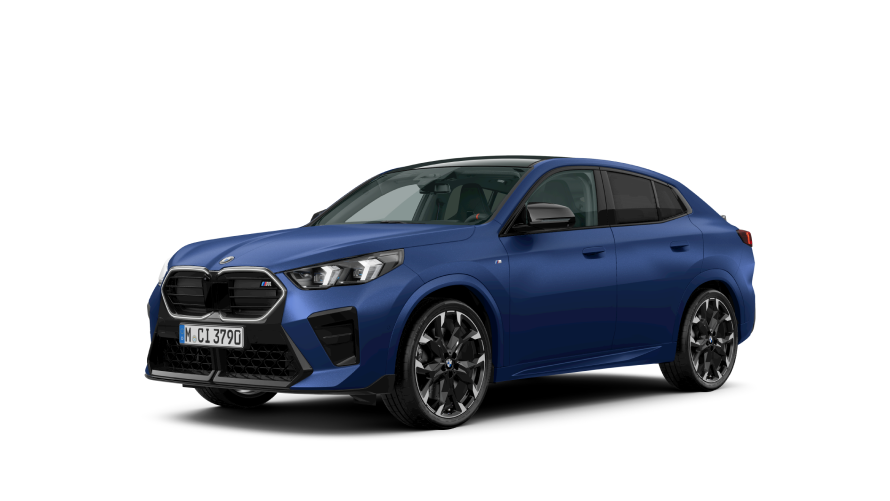
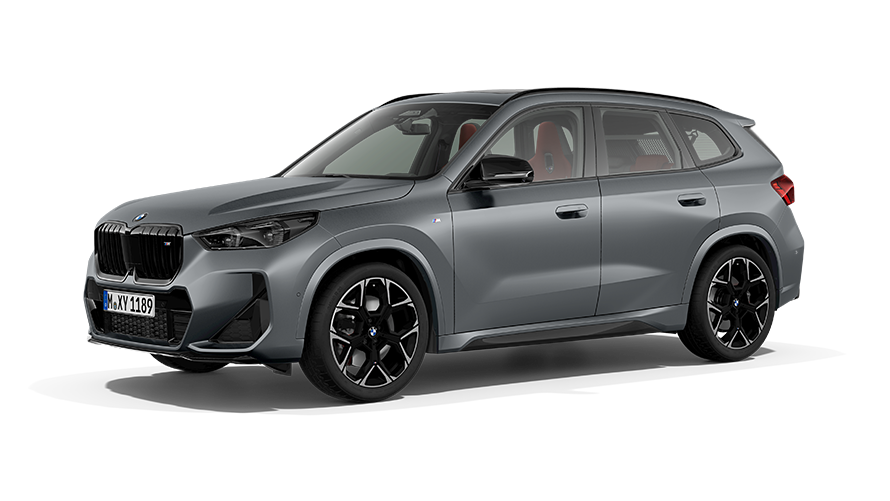

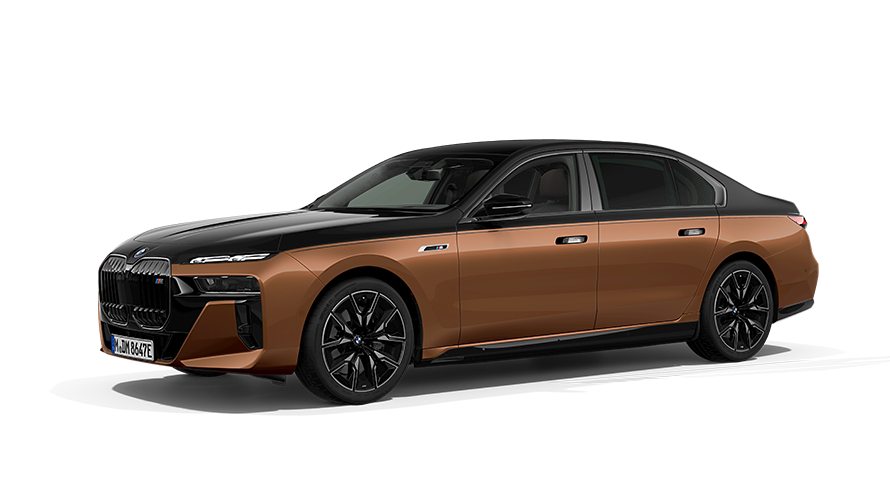

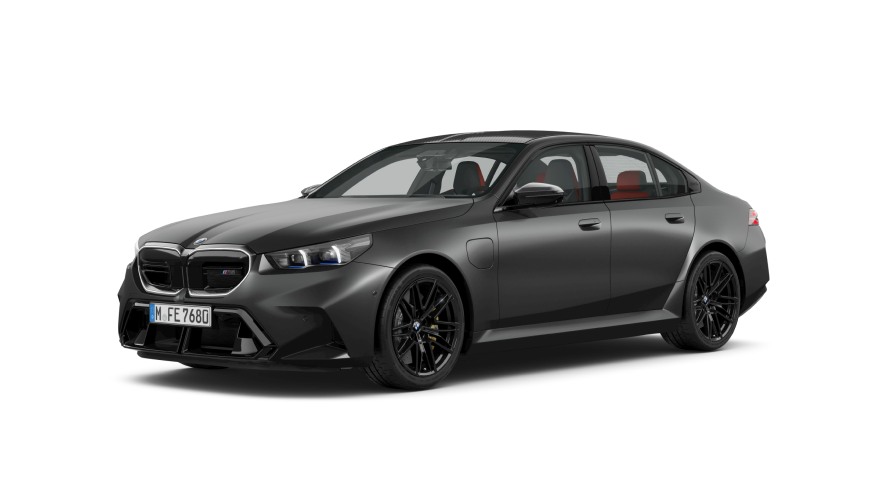
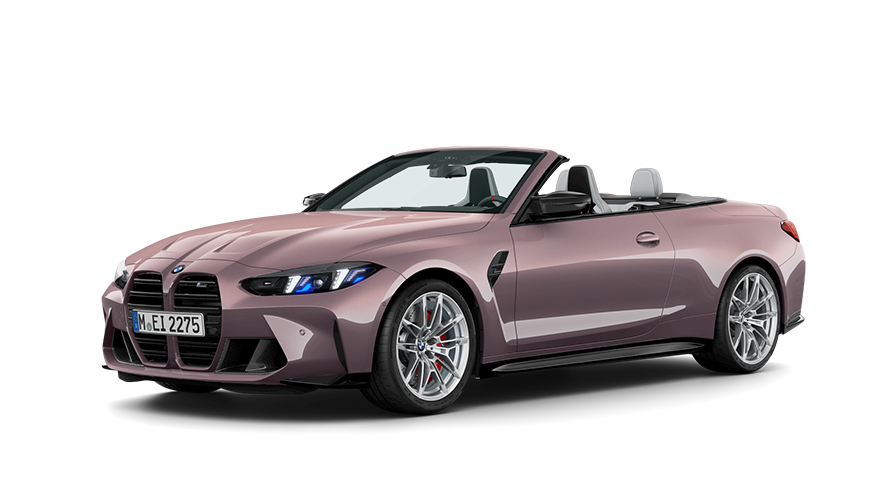
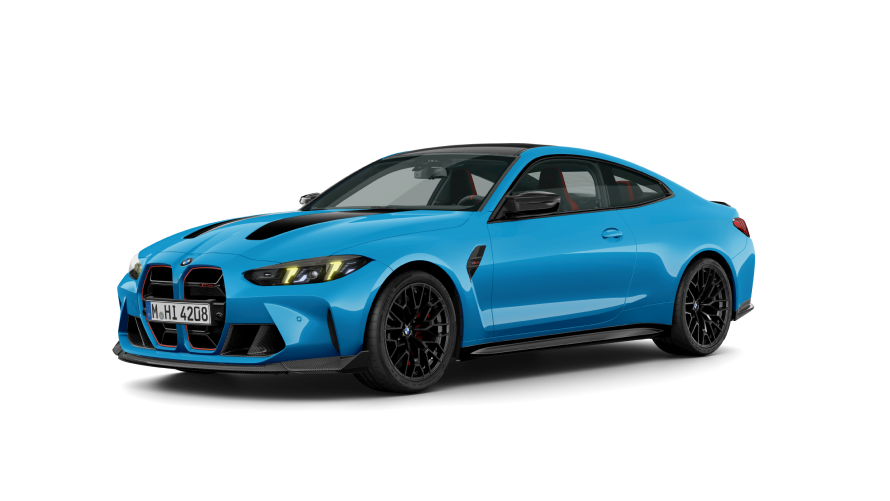
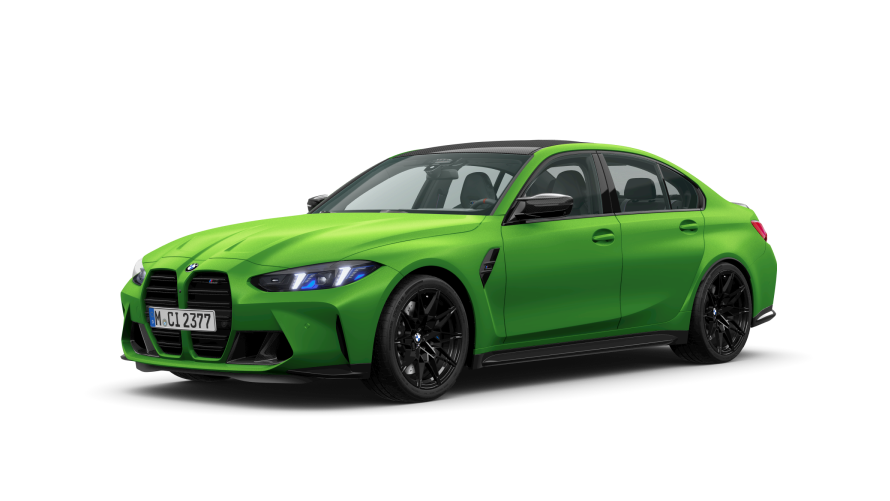
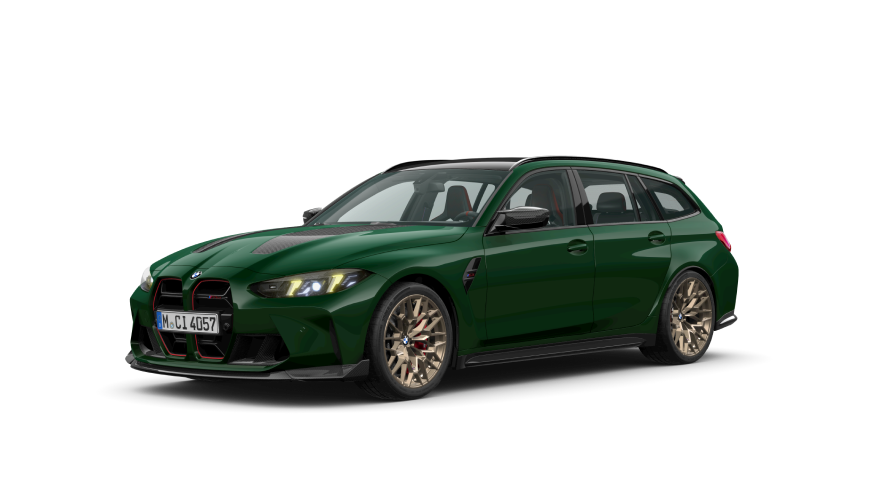


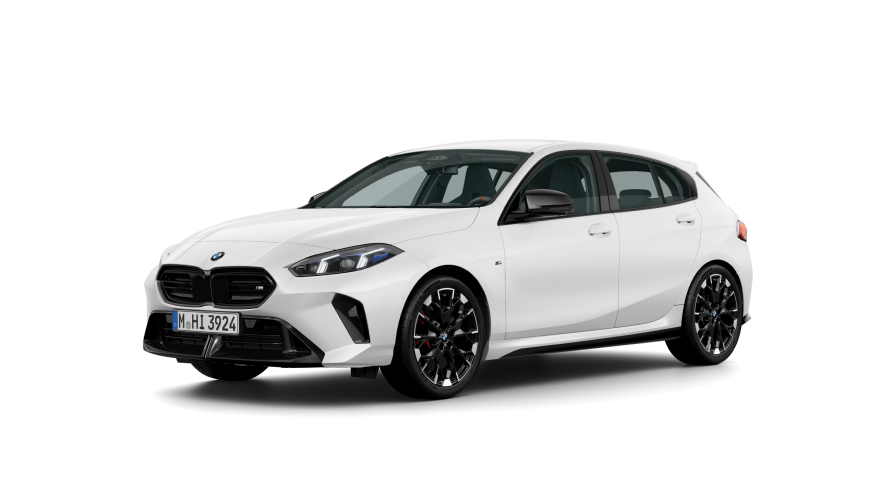
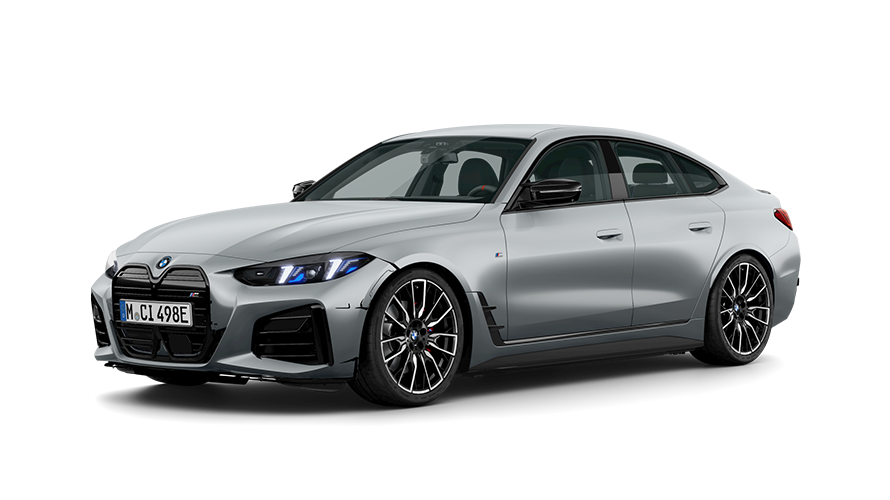
BMW XM
BMW X6 M
BMW X4 M
BMW X3 M50 xDrive
BMW M8 Coupé
BMW i7 M70 xDrive
BMW i5 M60 xDrive
BMW M5
BMW M4 Convertible
BMW 4 Series Coupé M Models
BMW M3 Competition Sedan
BMW 3 Series Touring M Models
BMW M235 xDrive Gran Coupé
BMW M2 Coupé
BMW M135i xDrive
The design and idea behind the BMW 2 Series Coupé M Automobiles stem from the historical roots of BMW M GmbH. The vehicles combines top sporting prowess and classic rear-wheel drive with the precision and agility of modern M Automobiles. Characteristic front and rear aprons optimise air flow and aerodynamics. Sportily attuned suspensions and powerful M TwinPower Turbo inline 6-cylinder petrol engines ensure breathtaking performance.
The BMW M235i xDrive Gran Coupé impresses from every angle. Powerful proportions at the front, side and rear together with the elegant coupé line create an incomparable character. Dominating the interior is a sporty and modern ambience defined by exclusive M design details. Underneath the bonnet of the BMW M235i xDrive, a powerful M TwinPower Turbo 4-cylinder petrol engine is at work. Among other features, the high-revving power plant offers optimised intake air ducting, a high-performance cooling package and an M exhaust unit with air vent control. Together with xDrive, the intelligent all-wheel drive system, the result is tremendous driving dynamics paired with high traction.
The BMW M240i Coupé is the perfect compromise between sportiness and convenient everyday utility. Its M TwinPower Turbo 6-cylinder petrol engine delivers 250 kW (340 hp). A sporty performance, which thanks to the interplay with M Sport suspension and 8-speed Steptronic Sport transmission, provides dynamic driving fun. Additional safety and stability comes from the optionally available intelligent BMW xDrive all-wheel drive system.
The BMW M2 CS is the most powerful representative of the BMW 2 Series Coupé M automobiles – an impressive powerhouse, with every detail systematically designed for performance and action on the racetrack. The high-performance M TwinPower Turbo 6-cylinder petrol engine develops a tremendous 331 kW (450 hp) with 550 Nm of torque, while an M sport exhaust system supplies the characteristic sound so typical of M vehicles. Highly developed and perfectly tuned features such as the Adaptive M suspension, the powerful M sport brake or the fast 7-speed M double-clutch transmission with Drivelogic guarantee adrenaline-charged driving fun on both road and racetrack. Exclusive interior details made of Carbon (CFRP) optimise the weight distribution and aerodynamics, conveying an air of superior athleticism.
The BMW 3 Series Sedan M Automobiles impress with powerful aesthetics and uncompromising sportiness. The top model, the BMW M3 Competition Sedan, demonstrates genuine motor racing character both visually and technically. Propelled by a 510-hp (375 kW) high-performance BMW M TwinPower Turbo inline 6-cylinder petrol engine, the vehicle accelerates from 0 to 100 km/h in 3.9 seconds with its torque of 650 Nm. Highly developed drivetrain and chassis technologies adapted from motorsport, such as the optional all-wheel drive M xDrive*, the 8-speed M Steptronic with Drivelogic and the Adaptive M suspension guarantee maximum driving dynamics and traction in every situation. *M xDrive is expected to be available from summer 2021.
The powerful heart of the BMW M3 Sedan is a high-performance BMW M TwinPower Turbo inline 6-cylinder petrol engine with a sporty 480 hp (353 kW) and 550 Nm of torque. A manual 6-speed M transmission with short, precise gear changes combines with the rear-wheel drive as a standard feature to provide an especially sporty driving style – and maximum emotion at the limits.
The BMW M340i xDrive and M340d xDrive Sedan combine the traditionally sporty genes of the BMW 3 Series Sedan with exclusive motorsport DNA. The result: two cars with powerful BMW TwinPower Turbo engines, suspension components from BMW M GmbH tuned down to the finest detail and excitingly sporty design that bring the love of motor racing onto the road with every single metre.
The BMW 4 Series Coupé M Automobiles offer aesthetics and driving dynamics of a supreme level. The BMW M4 Competition Coupé has a 510-hp (375-kW) high-performance BMW M TwinPower Turbo inline 6-cylinder petrol engine that develops a powerful 650 Nm of torque to accelerate the vehicle from 0 to 100 km/h in a swift 3.9 seconds. At the same time, highly developed drivetrain and chassis technologies with their origins in motorsport, such as the optional all-wheel drive M xDrive*, the 8-speed M Steptronic with Drivelogic and the Adaptive M suspension, provide maximum driving dynamics and traction – both in everyday use and on the race track. *M xDrive is expected to be available from summer 2021.
The high-performance BMW M TwinPower Turbo inline 6-cylinder petrol engine of the BMW M4 Coupé produces a sporty 480 hp (353 kW) at a torque of 550 Nm. The vehicle has a manual 6-speed M transmission with short, precise gear changes. Combined with the rear-wheel drive as a standard feature, this facilitates an especially intensive interaction between driver and vehicle.
It drives according to its own rules. Thanks to its characteristic design, powerful performance and inimitable driving dynamics, the BMW M440i xDrive Coupé makes sure that adrenaline levels remain constantly high. The efficient BMW M TwinPower Turbo 6-cylinder petrol engine, the M aerodynamics package and exclusive design highlights in Cerium Grey guarantee gooseflesh at first sight and underline the independent nature of this lively sports coupé.
Open for maximum intensity. Equipped with the M Competition package and a 450 hp M TwinPower Turbo inline 6-cylinder petrol engine as well as innovations from motorsport, the BMW M4 Convertible ensures the most direct connection between adrenaline-filled high performance and all-out driving pleasure. While the M engine provides uninterrupted boost right up to the limits with the 7-speed M double-clutch transmission, the Active M differential, the Adaptive M suspension or M Servotronic allow for powerful, precision driving. It’s an experience that remains unrivalled, not only with the hardtop down. It catapults M driving fascination to a whole new level.
The formidable power, a special chassis setup that also encompasses all the relevant control systems and characteristic accents in Black high-gloss – with these features the BMW M5 Competition has only one aim: to set the maximum distance from the competition.
Excitingly and elegantly shaped: The BMW M5 with M xDrive is a statement of supreme engineering skill and innovative driving intelligence. For hitherto unimagined dimensions of driving dynamics up to the limits.
BMW M550i xDrive Sedan impresses with sportiness, comfort and real suitability for everyday use. Equipped with 390 kW (530 hp), the BMW M550i creates a lot of of dynamic driving experiences. Perfectly attuned components such as the intelligent BMW xDrive all-wheel drive system and the Adaptive M suspension Professional ensure an optimum level of driving stability and agility.
The pinnacle of driving luxury: The BMW M8 Competition Coupé with M xDrive is the most powerful and extravagant vehicle in the BMW M8 Coupé range. Its M TwinPower Turbo 8-cylinder petrol engine develops an outstanding 460 kW (625 hp). In combination with numerous highly-developed drive and suspension components inspired by motorsport it ensures an unparalleled driving experience. With its motorsport DNA, it represents the epitome of BMW M's engineering artistry and guarantees the highest level of adrenaline-filled driving pleasure.
The BMW M8 Coupé with M xDrive offers luxury ambiance with an undeniable motorsport feeling, designed to push the limits of dynamic performance. The M TwinPower Turbo 8-cylinder petrol engine delivers an impressive 441 kW (600 hp) and has a torque of 750 Nm. A cross-bank exhaust manifold optimises the response and two twin scroll exhaust gas turbochargers enhance the power output. The M engine, used in a similar design in motor racing, ensures excellent performance in perfect interaction with the 8-speed M Steptronic with Drivelogic, Adaptive M Suspension and Active M Differential – and provides ultimate M driving pleasure in every single second.
The BMW M850i xDrive Coupé offers an exceptional synthesis of comfort, performance and efficiency. Its powerful M TwinPower Turbo 8-cylinder petrol engine with a displacement of 4.4 litres, 390 kW (530 hp) and 750 Nm torque offers inspiring driving pleasure at all times. The BMW xDrive all-wheel drive system with M Sport differential, Adaptive M suspension and electro-mechanical active roll stabilisation, ensures outstanding driving dynamics, perfect traction and optimum tracking stability. The latter allows particularly dynamic cornering – and in combination with the other powerful components, it leads to increased pulse frequencies.
The BMW 8 Series Gran Coupé M Automobiles are exceptional four-door sports cars that combine supreme dynamics and agility, a sporty and elegant design language and an extremely luxurious interior within each model.
Leading this exclusive model range is the BMW M8 Competition Gran Coupé, an extremely powerful sports car. Its high-performance M TwinPower Turbo 8-cylinder petrol engine produces an outstanding 460 kW (625 hp) and uses this to catapult the vehicle from 0 to 100 km/h in a rapid 3.2 seconds. With its highly tuned components inspired by motorsport accompanied by the M xDrive as a standard production feature, this M Automobile offers driving dynamics and agility at the highest level.
The BMW M8 Gran Coupé with M xDrive is a luxurious sports car that guarantees top performance and adrenaline-charged driving pleasure. Cementing this guarantee, alongside the high-performance M TwinPower 8-cylinder petrol engine with 441 kW (600 hp), are numerous drive train and suspension components inspired by motorsport, such as the 8-speed M Steptronic transmission with Drivelogic, the Adaptive M suspension or the Active M Differential.
The BMW M850i xDrive Gran Coupé supplies an optimum combination of sportiness and everyday utility. Its powerful M TwinPower Turbo 8-cylinder petrol engine develops 390 kW (530 hp) and 750 Nm of torque from its displacement of 4.4 litres. The outcome from the interplay between optimally tuned drive train and suspension components is an agile and highly dynamic driving experience – perfectly complemented by the driver-oriented cockpit and the sporty yet luxurious interior concept.
The BMW X3 M Automobiles combine the adventurous spirit of a BMW X3 with the exclusive sports aspiration of BMW M. The BMW X3 M, with its motorsport DNA, offers driving dynamics of the highest calibre – taken to new heights in the BMW X3 M Competition, which is simply thrilling on every road and racetrack with its maximum levels of output and exclusivity. BMW X3 M40i and BMW X3 M40d models deliver an impressive balance of performance, comfort and efficiency.
Driving the BMW X3 M Competition is an extremely powerful high-performance M TwinPower Turbo 6-cylinder-petrol engine. With 375 kW (510 hp) and 600 Nm of torque, it accelerates the vehicle from 0 to 100 km/h in a breathtaking 4.1 seconds. The interplay between M xDrive and Active M Differential, M specific suspension and M Servotronic steering together with 8-speed M Steptronic transmission ensure maximum driving dynamics and agility.
The BMW X3 M has a high-performance M TwinPower Turbo 6-cylinder-petrol engine that supplies an impressive 353 kW (480 hp). A powerful 600 Nm of torque provides rapid acceleration to 100 km/h in 4.2 seconds. Equipped with M xDrive and active M differential, M specific suspension and M Servotronic steering as well as 8-speed M Steptronic transmission, the BMW X3 M offers driving dynamics of the highest calibre.
The BMW X3 M40i is propelled by a powerful M TwinPower Turbo 6-cylinder-petrol engine. The power unit supplies 260 kW (354 hp) and delivers a maximum torque of 500 Nm. Interaction between Adaptive M suspension, variable sport steering, M Sport brakes as standard, BMW xDrive and 8-speed Steptronic Sport transmission optimises the lateral and longitudinal dynamic properties and guarantees intensive sports pleasure.
At the heart of the BMW X3 M40d is an M TwinPower Turbo 6-cylinder diesel engine with two TwinScroll turbochargers and Common rail direct injection. The engine develops 240 kW (326 hp) and an impressive torque of 680 Nm. Ensuring optimum results for driving dynamics is the setup featuring Adaptive M suspension, variable sport steering, M Sport brakes as standard, BMW xDrive and 8-speed Steptronic Sport transmission.
The BMW X4 M Automobiles are strong characters. They combine the athleticism of an M Automobile with the expressive temperament of a BMW X4. The result: four highly emotive sports cars for a maximum level of passion and adrenaline. The BMW X4 M, with its motorsport DNA, offers driving dynamics of the highest calibre. This is taken to new heights in the BMW X4 M Competition, which thrills on every road and racetrack with maximum levels of output and exclusivity. BMW X4 M40i and BMW X4 M40d models deliver an impressive balance of performance, comfort and efficiency.
The BMW X4 M Competition has an extremely powerful high-performance M TwinPower Turbo 6-cylinder-petrol engine. The high-revving power unit delivers 375 kW (510 hp) and accelerates the vehicle from 0 to 100 km/h with some 600 Nm of torque in just 4.1 seconds. In the process, the perfect interplay between M xDrive and Active M Differential, M specific suspension and M Servotronic steering together with 8-speed M Steptronic transmission guarantees maximum driving dynamics and agility.
The BMW X5 M and BMW X6 M Automobiles manifest their claim to leadership with powerful proportions, exclusive M design and outstanding performance.
The BMW X5 M Competition and the BMW X6 M Competition have an extremely powerful high-performance M TwinPower Turbo 8-cylinder petrol engine. The high-revving power unit delivers 460 kW (625 hp) and accelerates the vehicle from 0 to 100 km/h with 750 Nm of torque in just 3.8 seconds. In the process, the perfect interplay between M xDrive and active M Differential, M specific suspension and M Servotronic together with 8-speed M Steptronic transmission guarantees maximum driving dynamics and agility.
The BMW X5 M and BMW X6 M have a high-performance M TwinPower Turbo 8-cylinder petrol engine that supplies an outstanding 441 kW (600 hp). A powerful 750 Nm of torque provides rapid acceleration from 0 to 100 km/h in 3.9 seconds. Equipped with M xDrive and active M differential, M specific suspension and M Servotronic steering as well as 8-speed M Steptronic transmission, the BMW X5 M and BMW X6 M offer driving dynamics of the highest calibre.
The BMW X5 M50i and the BMW X6 M50i are propelled by a powerful M TwinPower Turbo 8-cylinder petrol engine. The power unit supplies 390 kW (530 hp) and delivers a maximum torque of 750 Nm. Interaction between Adaptive M suspension, Integral Active steering, 8-speed Steptronic Sport transmission and BMW xDrive optimises the lateral and longitudinal dynamic properties and guarantees intensive sports pleasure.
The BMW X5 M50d and the BMW X6 M50d are equipped with an M TwinPower Turbo inline 6-cylinder diesel engine that ensures up to 750 Nm for impressive power in every driving situation. The optimal combination of power and efficiency also manifests itself in the set-up of Adaptive M suspension, Integral Active Steering, BMW xDrive and 8-speed Steptronic Sport transmission.
The BMW X4 M has a high-performance M TwinPower Turbo 6-cylinder-petrol engine that supplies an impressive 353 kW (480 hp). A powerful 600 Nm of torque provides rapid acceleration to 100 km/h in 4.2 seconds. Equipped with M xDrive and active M differential, M specific suspension and M Servotronic steering as well as 8-speed M Steptronic transmission, the BMW X4 M offers driving dynamics of the highest calibre.
The BMW X4 M40i is propelled by a powerful M TwinPower Turbo 6-cylinder-petrol engine. The power unit supplies 260 kW (354 hp) and delivers a maximum torque of 500 Nm. Interaction between Adaptive M suspension, Variable sport steering, M Sport brakes as standard, BMW xDrive and 8-speed Steptronic Sport transmission optimises the lateral and longitudinal dynamic properties and guarantees intensive sports pleasure.
At the heart of the BMW X4 M40d is an M TwinPower Turbo 6-cylinder diesel engine with two TwinScroll turbochargers and common rail direct injection. The engine develops 240 kW (326 hp) and an impressive torque of 680 Nm. Ensuring optimum results for driving dynamics is the setup featuring Adaptive M suspension, Variable sport steering, M Sport brakes as standard, BMW xDrive and 8-speed Steptronic Sport transmission.
A new form of exercising power – the new BMW X6 M50i and M50d impress with hitherto unachieved authority. The special M specific details and features perfectly complement the already extremely sporty, dominant design. Propelled by extremely powerful BMW TwinPower Turbo engines in combination with exceptional driving dynamics and future-oriented technologies, they are the ideal guiding force to follow your own paths.
Whether you are interested in a new or used M vehicle – this page will give you all the facts, test reports and financing or leasing offers for the current M Automobiles and, of course, a dealer for your test drive. M Power World offers exclusive information on M high-performance cars – and is the place for everyone united by a common passion: the thrill of the strongest letter in the world.
The BMW X7 M Automobiles combine an offroad performance typical of X vehicles with the exclusivity of the BMW Luxury Class and the sporting aspiration of BMW M. The result is two highly dynamic luxury SAVs ready to confidently conquer any new terrain.
Maximum power, precision and agility distinguish the BMW X7 M50i. Responsible for guaranteeing these qualities are not only the M TwinPower Turbo 8-cylinder petrol engine with 530 hp and 750 Nm of torque, but also the 8-speed Steptronic Sport transmission, a precisely tuned suspension and M Sport brake as standard equipment. Unrivalled in the interior: the luxurious ambience and state-of-the-art technologies.
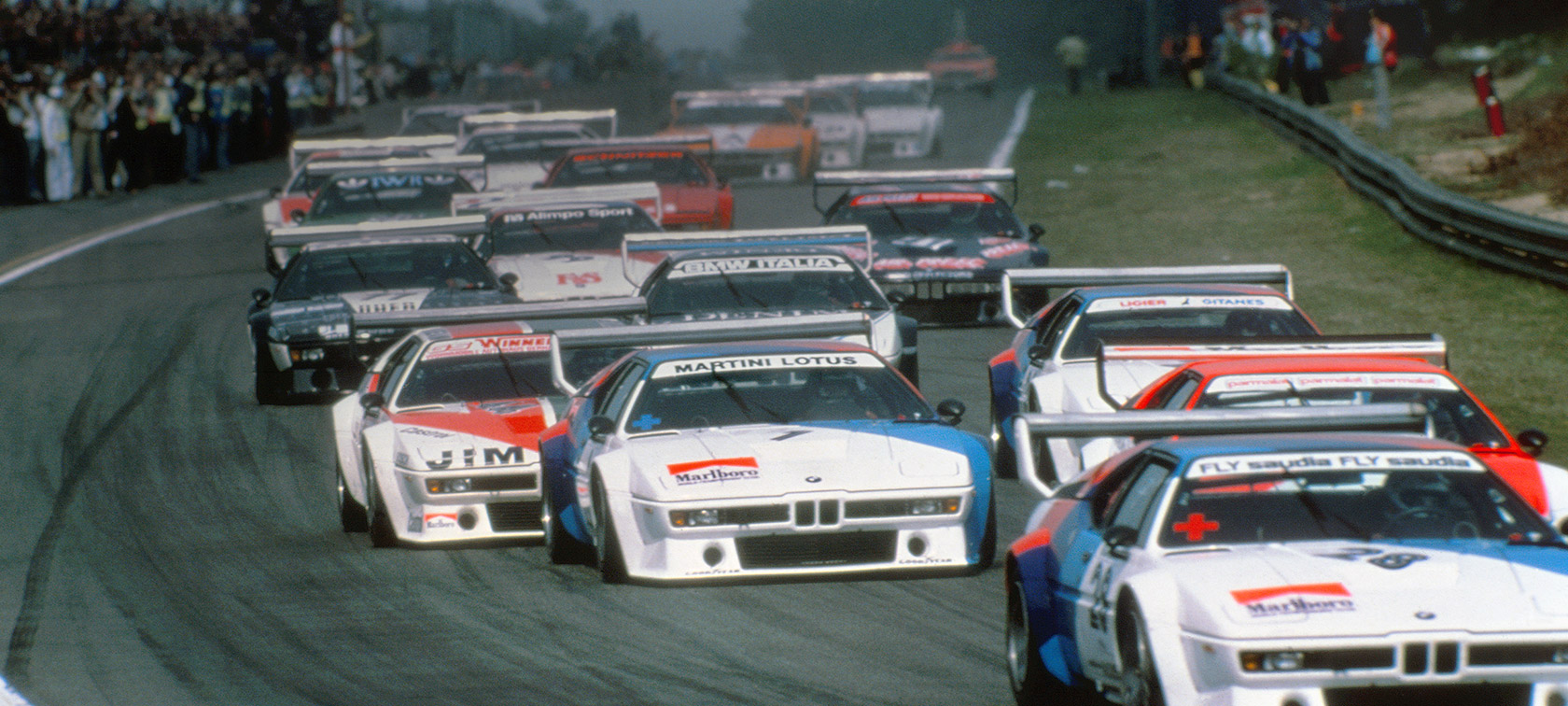
OVERVIEW OF THE BMW M SERIES’ HISTORY.
Passion for motor sport, exclusivity, and perfection – join us as we journey through almost 50 years of BMW M automobiles! We’ll introduce you to vehicles from the legendary BMW M1 and M3 to the current BMW M8. Discover exceptional performance and the opportunity to personalize models with BMW Individual and BMW M performance parts.
OVERVIEW OF THE BMW M SERIES’ HISTORY.
Passion for motor sport, exclusivity, and perfection – join us as we journey through almost 50 years of BMW M automobiles! We’ll introduce you to vehicles from the legendary BMW M1 and M3 to the current BMW M8. Discover exceptional performance and the opportunity to personalize models with BMW Individual and BMW M performance parts.

OVERVIEW OF THE BMW M SERIES’ HISTORY.
Passion for motor sport, exclusivity, and perfection – join us as we journey through almost 50 years of BMW M automobiles! We’ll introduce you to vehicles from the legendary BMW M1 and M3 to the current BMW M8. Discover exceptional performance and the opportunity to personalize models with BMW Individual and BMW M performance parts.
OVERVIEW OF THE BMW M SERIES’ HISTORY.
Passion for motor sport, exclusivity, and perfection – join us as we journey through almost 50 years of BMW M automobiles! We’ll introduce you to vehicles from the legendary BMW M1 and M3 to the current BMW M8. Discover exceptional performance and the opportunity to personalize models with BMW Individual and BMW M performance parts.
The BMW M1 (E26).
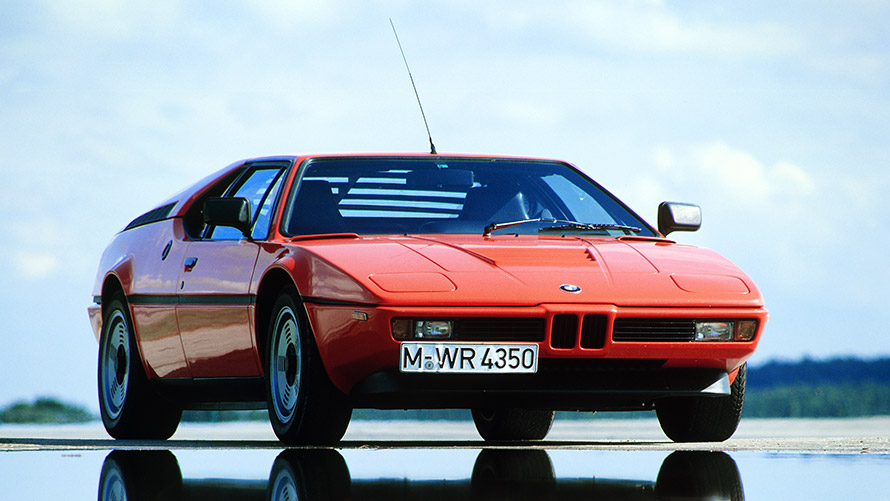
With its timeless wedge shape, the first vehicle developed by the then BMW Motorsport GmbH in the late seventies gets an enthusiastic welcome. Developed by design legend Giorgio Giugiaro, the shape is based on the BMW Turbo, a 1972 study by BMW’s longtime designer Paul Bracq. The narrow kidneys, the folding headlights and the clearly-drawn lines combine esthetics and dynamics. And the performance is also legendary: Until 1983 it is the fastest production vehicle in Germany. The mid-engine super sports car reaches a maximum speed of well over 260 km/h, establishing the tradition of M road vehicles.
From 1979 to 1981 only 460 vehicles are made – all hand built. Anyone lucky enough to drive an BMW M1 talks of its exceptional driving style, flexible curve dynamics and fast-turning 3.5 liter engine.
Production period: 1978 – 1981
Engines: 3.5 liters (204 kW, 277 hp), 6-cylinder
Length/width/height: 4,359 mm / 1,824 mm / 1,138 mm
BMW 1 M Coupé (E82).
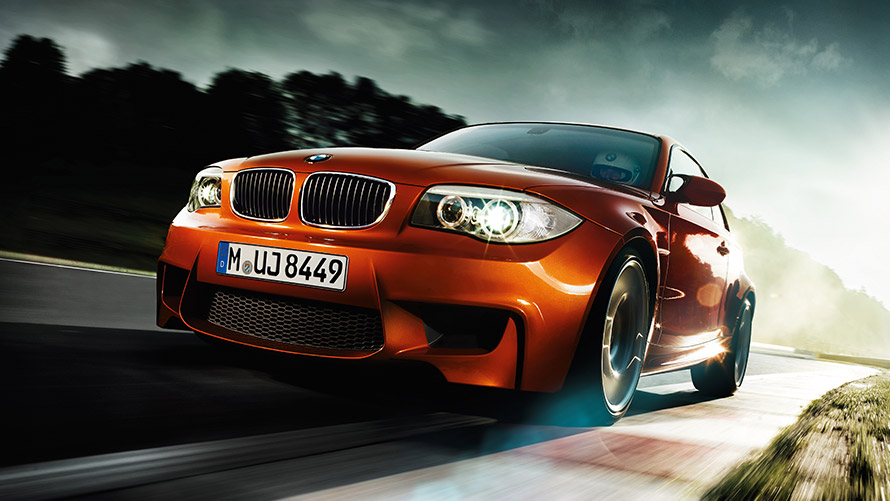
Even though the BMW 1 has been delighting drivers who appreciate sportiness and outstanding handling in a compact vehicle since 2004, the BMW 1 M Coupé has only been available since 2011. Two turbochargers boost the inline 6-cylinder petrol engine to 340 hp (250 kW). Combined with the short wheelbase and the wider track than the regular BMW 1, this provides a driving experience with extraordinary dynamics. More than 6,300 vehicles were built up to 2012. Three years later the BMW M2 joins the series, continuing the concept of merging a compact vehicle with the best characteristics of a sports car.
Production period: 2011 – 2012
Engines: 3.0 liters (250 kW, 277 hp), 6-cylinder
Length/width/height: 4,380 mm / 1,803 mm / 1,420 mm
The BMW M2 (F87).
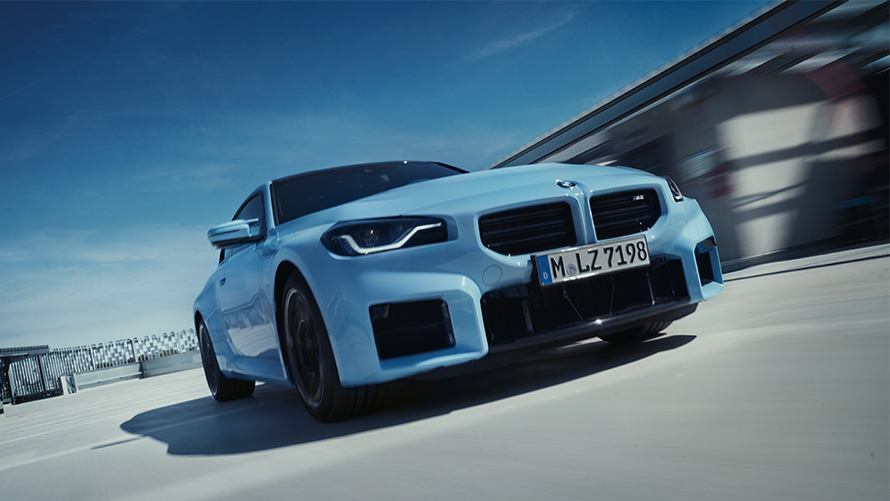
Since 2015 the BMW M2 has been the successor to the BMW 1 M Coupé, and has continued the dynamic, powerful compact series established by the BMW 2002 Turbo and the BMW M3 (E30).
The vehicle’s distinctive, confident exterior with its wide-flared wings and large inlets in the front apron are a testament to this. The 6-cylinder, turbo petrol engine has impressive torque and power, transferred to the road via an optional double-clutch transmission. The BMW M2 Competition, with an additional output of 30 kW (40 hp), took over in 2018 and is surpassed only by the BMW M2 CS (Club Sport). This has a production run of just 2,200 vehicles and an engine producing 331 kW (450 hp). In every version, the M chassis ensures clean, clear handling, precise control, and driving pleasure.
Production period BMW M2: 2015 – 2018, M2 Competition: 2018 – 2020, M2 CS: 2020
Engines: 3.0 liters (272 – 331 kW, 370 – 450 hp), 6-cylinder
Length/width/height: 4,461 – 4,468 mm / 1,854 – 1,871 mm / 1,410 – 1,414 mm
The BMW M3 (E30/2S, E30/2SC, E36/2S, E36/2CS, E36/4S, E46/2S, E46/2CS, E90/92/93, F80, G80).

Originally, the BMW M3 (E30/2S, E30/2SC) is intended to be the road version of a racing vehicle. However, interest is so overwhelming that many more than the 5,000 vehicles needed for Group A approval are sold. Extreme dynamics are immediately evident on the exterior; from the wide fenders and iconic rear wings to the newly designed C-pillar. The interior also features everything that has proven its worth in racing: internally ventilated brake discs, sports transmission with lower left first gear, the 2.3 liter 4-cylinder petrol engine with 200 hp (143 kW).
While the racing version goes from win to win, the BMW M3 exceeds all sales expectations: More than 18,000 vehicles, including the convertible version, are sold. As well as the revised 220 hp (154 kW) Evolution version and the BMW M3 Sport Evolution with 2.5 liter displacement and 238 hp (166 kW).
1992 sees the second generation of the BMW M3 (E36) continuing the success story. The vehicle is clearly more grown-up. There are only minor visual changes compared to the regular model, such the aerodynamically optimized M exterior mirrors. But there are radical changes under the hood: The inline 6-cylinder petrol engine with 286 hp (210 kW) and variable overhead camshafts (VANOS system) delivers breathtaking acceleration. From 1995 the model is updated to give not just 200 cm3 more displacement, but also 321 hp (236 kW).
At the turn of the millennium, the third version of the BMW M3 (E46) is launched, followed by the BMW M3 Convertible one year later. They continue the fundamental concept behind the BMW M3, combining as little weight as possible with as much driving dynamics as possible. The M genes are evident in the 343 hp (252 kW) driving experience. The exteriors of the Coupé and Convertible differ from the standard model with their wider camber, the grilles on the front fenders and the powerdome on the hood.
The BMW M3s built between 2007 and 2013 are now fitted with a number of new features. Just like the regular models, three bodies are available: Sedan (E90), Coupé (E92), and Convertible (E93). For the first time, a BMW M3 has a V8 engine. The 4-liter assembly delivers 420 hp (309 kW) and turns up to 8,300 rpm – the highest-speed production engine ever built by BMW! With the optional M Driver’s Package, the car reaches a maximum speed of 280 km/h.
From 2014, the fifth generation of the BMW M3 (F80) once again relies on an inline 6-cylinder petrol engine which, for the first time in an BMW M3, is fitted with turbochargers. The engine delivers its maximum torque at 1,850 rpm, making fast acceleration possible, whatever the circumstances. The 432 hp (317 kW) BMW M3 Sedan is the only body design available – the related Coupé and Convertible are now called BMW M4. The fender extensions, the M exterior mirrors, and the dark M carbon roof also show to the outside world that this vehicle has exceptional handling and driving dynamics. 2016 sees the introduction of the BMW M3 Competition, featuring an engine that delivers 450 hp (331 kW) and uses the adaptive M chassis as standard.
In 2018, the BMW M3 CS is manufactured for just three months, with an engine adding an additional 10 hp to bring it to 460 hp (338 kW).
The BMW M3 (G80) has been available since 2021 with a radically different appearance from the standard sedan due to its large, high-standing kidney. It continues the concept of combining sportiness, dynamism, and everyday practicality of the previous BMW M3 – the Sports Sedan is equipped with a manual 6-speed transmission and 480 hp (353 kW) engine. The BMW M3 Competition is also available, offering 510 hp (375 kW). The 8-speed M Steptronic transmission with Drivelogic enables rapid gear changes for maximum driving dynamics, combined with the precisely-tuned M chassis.
Production period BMW M3: 1986 – today
Engines: 2.3 – 3.0 liters (143 – 375 kW, 200 – 510 hp), 4-, 6- & 8-cylinder
Length/width/height: 4,346 – 4,794 mm / 1,680 – 1,887 mm / 1,370 – 1,431 mm
The BMW M4 (F82, F83, G82).

The BMW 4 series replaces the 3 Series Coupé and represents a clear break. Obviously designed from scratch, this vehicle differs significantly from the BMW 3 series with its recessed passenger compartment, longer hood and shorter overhangs – all leading to a more expressive, more powerful appearance. This also applies to the BMW M4 Coupé and the M4 Coupé Competition (2016 – 2020) delivering 450 hp (331 kW), as well as the 2017 and 2018 M4 Coupé CS with 460 hp (338 kW). Meanwhile, the M4 is available as GTS Coupé (2017 – 2018), powered by 500 hp (368 kW). The M4 Convertible and the M4 Competition Convertible bring a breath of fresh air. All vehicles use a 3.0 liter 6-cylinder petrol engine with a twin scroll turbocharger.
The considerably longer and wider second generation sets clear visual accents with the double kidney standing high and tilted forward. With the BMW M4, the 3.0 liter petrol engine with 6 cylinders delivers 480 hp (manual transmission) and 510 hp (8-speed automatic transmission) (353 and 375 kW respectively). With the optional M Driver’s Package, it reaches a speed of 290 km/h. Dynamism and agility are underscored by precise, uncompromising design.
Production period BMW M4: 2014 – today
Engines: 3.0 liters (317 – 375 kW, 431 – 510 hp), 6-cylinder
Length/width/height: 4,671 – 4,794 mm / 1,870 – 1,887 mm / 1,383 – 1,394 mm
The BMW M5 (E28S, E34S, E34/5S, E39S, E60, E61, F10, F90).

Visually, the first BMW M5 (E28S) in 1985 hardly differed from the standard sedan. But the hand-crafted vehicles feature an updated BMW M1 engine and can therefore reach a speed of over 250 km/h. With more than 2,200 vehicles produced, the foundations for the top-of-the-line version of one of the most successful sports sedans were laid.
In 1988, the new BMW 5 series also includes a new M5 (E34S). This initially delivers 315 hp (232 kW), but in 1992 the engines are re-engineered. Now they extract 340 hp (250 kW) from a 3.8 liter displacement and, in a limited edition of fewer than 900 units, the car is also available as an M5 Touring. Thanks to its flawless driving experience and high-precision steering, this M5 also copes with every situation confidently and competently.
From 1998 to 2003, the BMW M5 (E39S) conquers the highway with an 8-cylinder engine delivering a 5 liter displacement and 400 hp (294 kW). At this time, it is the perfect example of a sports sedan – ideal for everyday use yet, thanks to its performance and dynamism, a match for almost every sports car.
The successor model (E60) appears in showrooms in 2005, followed by the Touring version (E61) in 2007, which is also the last M5 in this body shape.
Equipped with a 10-cylinder engine, its 507 hp accelerates the vehicle to 305 km/h with the optional M Driver’s Package.
In 2011, BMW M GmbH equips the M5 (F10) with a twin turbo engine for the first time. The engine delivers 560 hp (412 kW) and, at the time, is the most powerful model in the BMW line-up. Two years later, the first M5 Competition model is available with a slight increase in performance to 575 hp (423 kW), and in 2014 the 8-cylinder “30 years of M5” Special Edition is re-engineered to produce 600 hp (441 kW). Placing maximum torque between 1,500 and 5,750 revolutions per minute is unusual – so acceleration capacity is there, whatever the circumstances.
The current BMW M5 (F90) has remained true to the product line since 2017 and combines the typical M sportiness with the comfort and elegance of the BMW 5 Sedan. The recognizable engine from the previous M5, the new M xDrive all-wheel drive, and an 8-speed M Steptronic transmission mean powerful acceleration and outstanding driving dynamics are typical features of this vehicle from BMW M GmbH. This is only surpassed in 2018 by the BMW M5 Competition, which delivers 25 hp more, taking 625 hp (460 kW) to the streets. Limited to just one year of production, the BMW M5 CS (Competition Sport) accelerates from 0 to 100 km/h in 3.0 seconds with 635 hp (467 kW). Carbon parts reduce the weight of the extremely sporty sedan, which, on request, can be electronically controlled from 305 km/h.
Production period BMW M5: 1985 – 1995, 1998 – 2003, 2005 – today
Engines: 3.5 – 5.0 liters (302 kW, 410 hp), 6-, 8- and 10-cylinder
Length/width/height: 4,620 – 4,966 mm / 1,700 – 1,903 mm / 1,400 – 1,512 mm
The BMW M6 (E63, E64, F06, F12, F13).
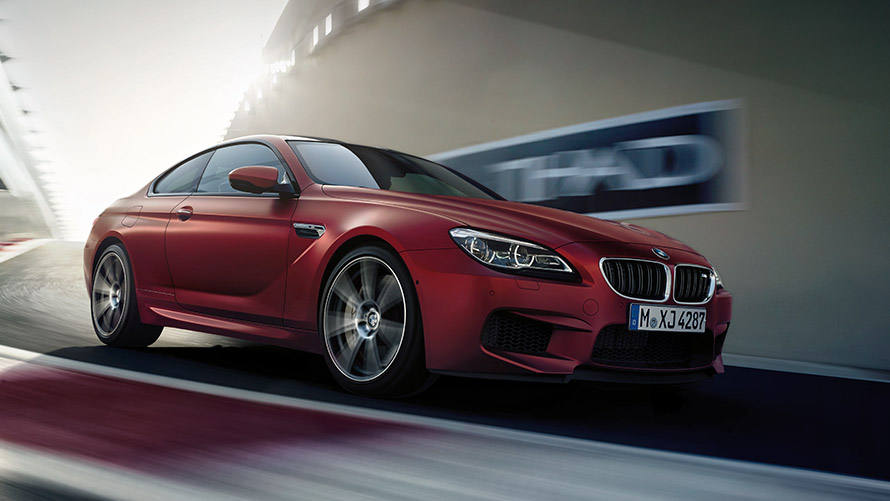
The M6’s predecessor, the BMW M635CSi, is already rolling off the production line in 1984. Equipped with the re-engineered BMW M1 engine, its 286 hp (210 kW) makes the coupé designed by Paul Bracq one of the fastest sports cars available at the time.
In 2005, with the end of the BMW 8 (E31), BMW once again launches a luxury-class coupé onto the market. Designed under Chris Bangle’s leadership, the vehicle has the typical M Coupé features: an exceptionally powerful 10-cylinder engine with 507 hp (373 kW), a characterful and confident design, and an adaptive chassis that not only guarantees comfort but also precision and driving dynamics. This is true for both fixed-roof and convertible versions of the car.
Its successor is introduced in 2012. The engine now has two fewer cylinders, but significantly more power. The twin-turbo V8 petrol engine delivers 560 hp (412 kW) or, as with the M6 Competition, 575 hp (423 kW). The Competition Coupé’s engine is re-engineered mid-2015 and puts 600 hp (441 kW) on the highway, thanks to its 7-speed dual-clutch transmission. With the optional M Driver’s Package, the BMW M6 reaches a speed of 305 km/h. This performance is reflected in the Coupé, the Convertible and, since 2013, the Gran Coupé.
Production period BMW M6: 2005 – 2018
Engines: 4.4 – 5.0 liters (373 – 441 kW, 507 – 600 hp), 8- & 10-cylinder
Length/width/height: 4,871 – 4,898 mm / 1,855 – 1,899 mm / 1,372 – 1,377 mm
The BMW M8 Competition (F91, F92, F93).

The M8 Coupé has been around for almost 30 years. At the beginning of the 1990s BMW engineers developed a BMW M8 prototype with a V12-cylinder engine based on the E31 Coupé.
But it took until 2019 for the first fully-badged BMW M8 Competition Coupé (F92), Convertible (F91) and Gran Coupé (F93) to appear in showrooms. With two parallel turbochargers, the 8-cylinder boasts a power output of 625 hp (460 kW) which, with the optional M Driver’s Package, enables speeds well above 300 km/h.
Even when parked, it is obvious the BMW M8 is the perfect combination of sportiness and luxury. The radical lines are dynamic and yet extremely elegant. Details such as the black chrome radiator grille and the high-gloss black mirror caps highlight the car’s sporty character: This is underscored by the standard carbon roof. What’s more, the adaptive M chassis, which adjusts to current driving conditions and supports the BMW M xDrive, ensures unparalleled driving dynamics. Whether as a Coupé, a Convertible or a four-door Gran Coupé, these vehicles offers superlatives in every respect.
Production period BMW M8 Competition: 2019 – today
Engines: 4.4 liters (460 kW, 625 hp), 8-cylinder
Length/width/height: 4,867 – 5,098 mm / 1,907 – 1,948 mm / 1,353 – 1,420 mm
The BMW X3 M Competition (F97).
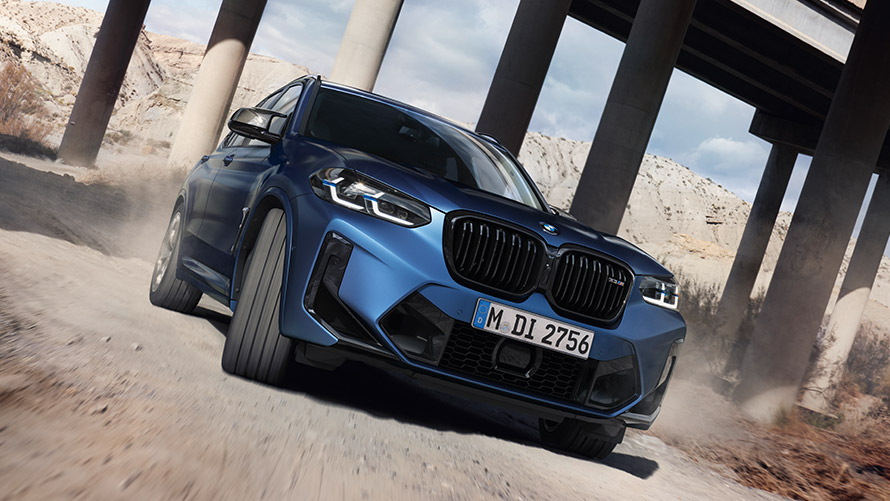
An M version of the BMW X3 is first available in 1993. With its high-performance, extremely powerful 6-cylinder twin-turbo petrol engine, the vehicle accelerates from 0 to 100 km/h in just 4 seconds and, after the redesign, in just 3.8 seconds. An all-wheel M xDrive with active M differential ensures that the full 480 hp (353 kW) can be released every time – a fascinating combination of X and M genes. The same applies to the BMW X3 M Competition model with 510 hp (375 kW).
The BMW X3 M also shows its power on the outside. The horizontal shoulder lines connect the self-assured front with the striking rear. The high-gloss black kidney and the M grille elements on the sides with their three-dimensional structures hint externally at the high-quality technology that awaits inside the vehicle: For example, the M sports seats offer exceptional lateral support, or the M interior trims in carbon. So the vehicle is always ready to be shown off over any terrain.
Production period BMW X3 M: 2019 – today
Engines: 3.0 liters (353 – 375 kW, 480 – 510 hp), 6-cylinder
Length/width/height: 4,726 mm / 1,897 mm / 1,669 mm
The BMW X4 M (F98).
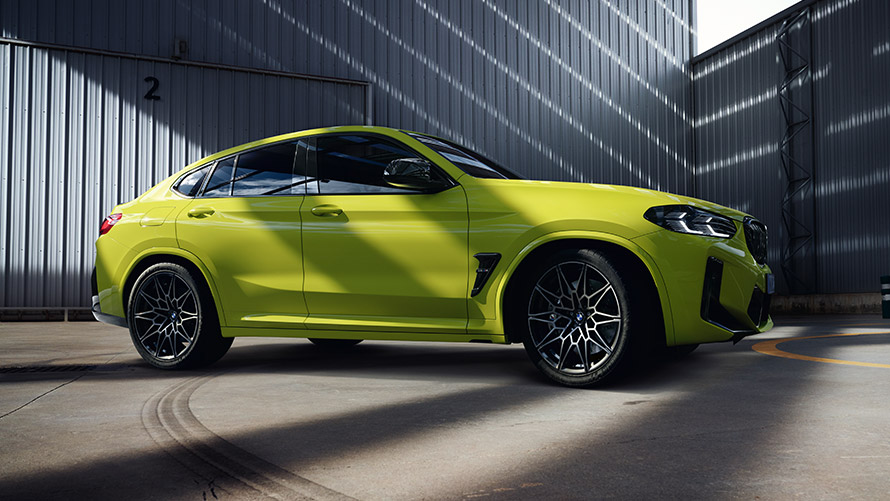
The M model is launched with the second generation of the BMW X4 in 2019. The sporty elegance of the basic model is even more clearly and precisely presented: The exclusive design elements of the optional M Carbon Exterior Package (no longer available as a package after the model redesign but as individual carbon fiber components), from the air intakes in the bumper to the mirror caps, emphasize the athletic character of the SUV/Coupé crossover. The vehicle shares the technical specifications and engines with the BMW X3 M: The BMW X4 M boasts 480 hp (353 kW), and the X4 M Competition 510 hp (375 kW) and has, after the model redesign, an enormous torque of 650 Nm. Thanks to the optional M Driver’s Package, the vehicles achieve maximum speeds of 280 and 285 km/h, respectively. The BMW X4 M combines outstanding performance and exclusivity with an expressive temperament.
Production period BMW X4 M: 2019 – today
Engines: 3.0 liters (353 – 375 kW, 480 – 510 hp), 6-cylinder
Length/width/height: 4,758 mm / 1,927 mm / 1,618 mm
The BMW X6 M (E71, F86, F96).
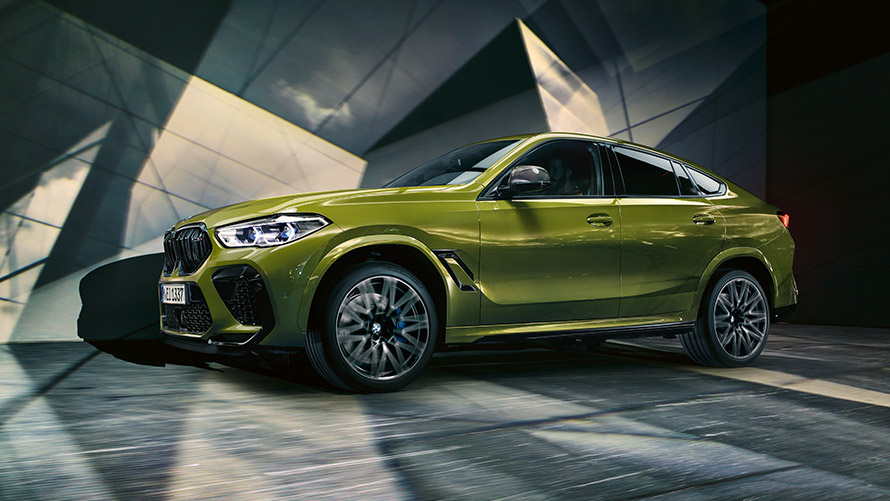
In 2008, the BMW X6 (E71) attracts attention as BMW’s first Coupé/SUV crossover. A year later, the M model BMW X6 M appeals to people who want the best of both worlds: SUV and sports car; unrestrained dominance and extraordinary driving dynamics. The combination of M xDrive and the 4.4 liter M TwinTurbo 8-cylinder petrol engine (555 hp/408 kW) provides the SUV with unprecedented agility – whatever the terrain.
In 2015 the second generation X6 M (F86) is ready to go, with the familiar 4.4 liter twin-turbo engine from the M5 and X5 M, boasting 575 hp (423 kW). With the optional M Driver's Package, the vehicle combines a coupé-like profile with large air intakes and achieves 280 km/h.
2019 sees a switch in model to the X6 M Competition (F96). This brings its formidable 625 hp (460 kW) power from the M xDrive with active M differential to the highway and combines the advantages of rear and all-wheel drives. Exclusive M highlights, such as the black front grid or the M gills with integrated M logo, emphasize the distinctive look even further. The BMW X6 M combines luxury with supremacy and extreme sportiness – an extraordinary combination!
Production period BMW X6 M: 2009 – today
Engines: 4.4 liters (408 – 460 kW, 555 – 625 hp), 8-cylinder
Length/width/height: 4,876 – 4,948 mm / 1,983 – 2,019 mm / 1,684 – 1,697 mm
The BMW Z3 M (E36/7, E36/8).
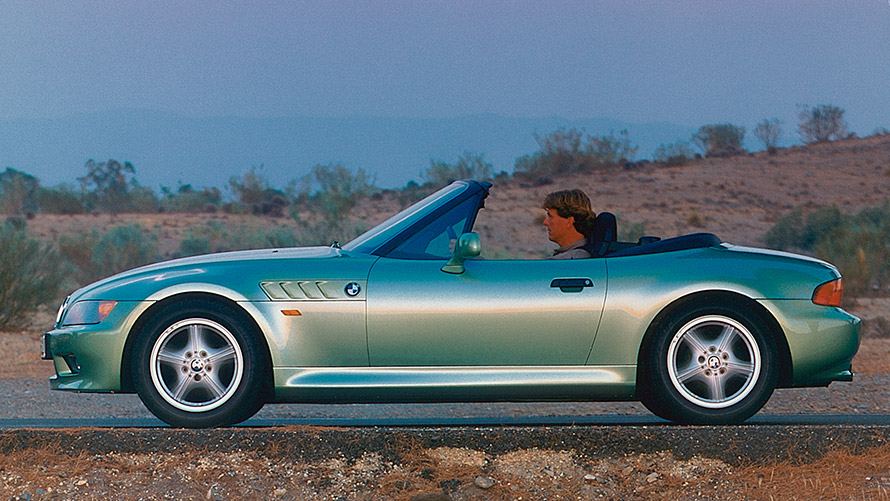
In 1995 BMW launches the purist Z3, a roadster based on the former BMW 3 Compact (E36). From 1997, using the engine from the former BMW M3 (E36), the vehicle delivers exceptional performance, particularly in driving dynamics, and leaves far more powerful competitors standing in the slalom. A year later, the fixed-roof version is also available as an M model. From 2001 onwards, BMW equips both versions – Coupé and Roadster – with the M3 successor’s engine (E46), creating more dynamic handling with almost the same power thanks to its high-rev temperament.
Production period BMW Z3 M: 1997 – 2002
Engines: 3.2 liters (236 – 239 kW, 321 – 325 hp), 6-cylinder
Length/width/height: 4,025 mm / 1,740 mm / 1,279 mm
The BMW Z4 M (E85, E86, G29).
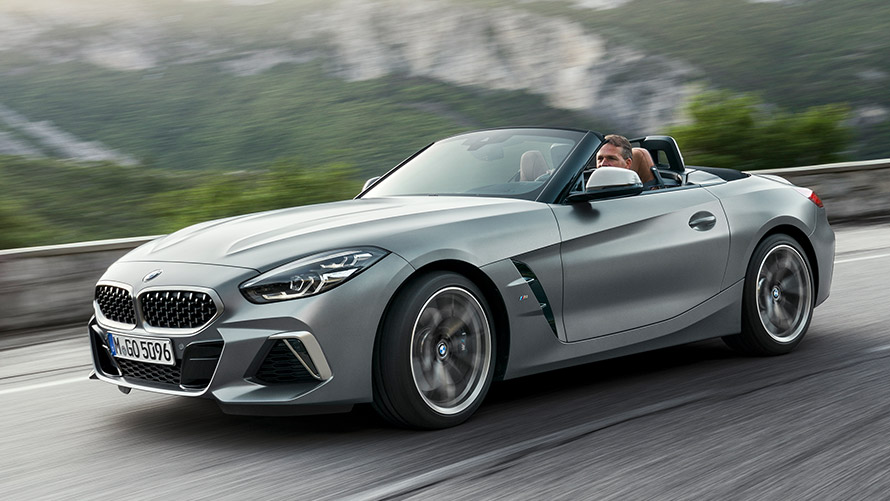
The successor to the Z3 Roadster and Coupé grows significantly in size and offers considerably more comfort, which is why it is named Z4. After a redesign in 2006, the vehicle, designed by Chris Bangle, is also available as a Z4 M, featuring the engine from the BMW M3 (E46), but now with the full power of 343 hp (252 kW). The Roadster (E85) and Coupé (E86) are launched at the same time.
BMW did not produce an M version for the successor, the E89, but the G29 is available as the M40i. With a wide, flat front and a long hood, it continues the design concept of the roadster, featuring powerful accents and offering an extremely sporty driving experience. All brought about by the 340 hp (250 kW) engine, the adaptive M chassis, and M Sport Differential.
Production period BMW Z4 M: 2006 – 2008, 2019 – today
Engines: 3.0 – 3.2 liters (250 – 252 kW, 340 – 343 hp), 6-cylinder
Length/width/height: 4,091 – 4,321 mm / 1,781 – 1,861 mm / 1,268 – 1,304 mm
Fuel consumption and CO2 emissions.
BMW M135i xDrive:
Fuel consumption in l/100 km (combined): 6.7
CO2 emissions in g/km (combined): 155BMW M235i xDrive Gran Coupé:
Fuel consumption in l/100 km (combined): 6.8
CO2 emissions in g/km (combined): 157BMW M240i xDrive Coupé:
Fuel consumption in l/100 km (combined): 8.8-8.1
CO2 emissions in g/km (combined): 200-185BMW M3 Competition Sedan:
Fuel consumption in l/100 km (combined): 10.1
CO2 emissions in g/km (combined): 234BMW M340i xDrive:
Fuel consumption in l/100 km (combined): 7.3
CO2 emissions in g/km (combined): 168BMW M4 Competition Coupé:
Fuel consumption in l/100 km (combined): 10.2
CO2 emissions in g/km (combined): 234BMW M4 Competition Convertible with M xDrive:
Fuel consumption in l/100 km (combined): 10.4
CO2 emissions in g/km (combined): 237BMW M440i xDrive Gran Coupé:
Fuel consumption in l/100 km (combined): 8.2
CO2 emissions in g/km (combined): 187BMW i4 eDrive40:
Power consumption in kWh/100 km (combined): 19.1–16.1
CO2 emissions in g/km (combined): 0BMW i4 M50:
Power consumption in kWh/100 km (combined): 22.5–18
CO2 emissions in g/km (combined): 0BMW M5 Competition:
Fuel consumption in l/100 km (combined): 11.3
CO2 emissions in g/km (combined): 259BMW M8 Coupé Competition:
Fuel consumption in l/100 km (combined): 10.4
CO2 emissions in g/km (combined): 239BMW M8 Gran Coupé Competition:
Fuel consumption in l/100 km (combined): 10.7
CO2 emissions in g/km (combined): 243BMW X3 M40i:
Fuel consumption in l/100 km (combined): 9.8
CO2 emissions in g/km (combined): 224BMW X3 M Competition:
Fuel consumption in l/100 km (combined): 10.6
CO2 emissions in g/km (combined): 244BMW X4 M40i:
Fuel consumption in l/100 km (combined): 9.8
CO2 emissions in g/km (combined): 224BMW X4 M Competition:
Fuel consumption in l/100 km (combined): 10.6
CO2 emissions in g/km (combined): 244BMW X5 M Competition:
Fuel consumption in l/100 km (combined): 12.5
CO2 emissions in g/km (combined): 286BMW X6 M Competition:
Fuel consumption in l/100 km (combined): 12.5
CO2 emissions in g/km (combined): 286The values of fuel consumptions, CO2 emissions and energy consumptions shown were determined according to the European Regulation (EC) 715/2007 in the version applicable at the time of type approval. The figures refer to a vehicle with basic configuration in Germany and the range shown considers optional equipment and the different size of wheels and tires available on the selected model.
The CO2 efficiency specifications are determined according to Directive 1999/94/EC and the European Regulation in its current version applicable. The values shown are based on the fuel consumption, CO2 values and energy consumptions according to the NEDC cycle for the classification.
For further information about the official fuel consumption and the specific CO2 emission of new passenger cars can be taken out of the „handbook of fuel consumption, the CO2 emission and power consumption of new passenger cars“, which is available at all selling points and at https://www.dat.de/angebote/verlagsprodukte/leitfaden-kraftstoffverbrauch.html.
Fuel consumption and CO2 emissions.
BMW M135i xDrive:
Fuel consumption in l/100 km (combined): 6.7
CO2 emissions in g/km (combined): 155BMW M235i xDrive Gran Coupé:
Fuel consumption in l/100 km (combined): 6.8
CO2 emissions in g/km (combined): 157BMW M240i xDrive Coupé:
Fuel consumption in l/100 km (combined): 8.8-8.1
CO2 emissions in g/km (combined): 200-185BMW M3 Competition Sedan:
Fuel consumption in l/100 km (combined): 10.1
CO2 emissions in g/km (combined): 234BMW M340i xDrive:
Fuel consumption in l/100 km (combined): 7.3
CO2 emissions in g/km (combined): 168BMW M4 Competition Coupé:
Fuel consumption in l/100 km (combined): 10.2
CO2 emissions in g/km (combined): 234BMW M4 Competition Convertible with M xDrive:
Fuel consumption in l/100 km (combined): 10.4
CO2 emissions in g/km (combined): 237BMW M440i xDrive Gran Coupé:
Fuel consumption in l/100 km (combined): 8.2
CO2 emissions in g/km (combined): 187BMW i4 eDrive40:
Power consumption in kWh/100 km (combined): 19.1–16.1
CO2 emissions in g/km (combined): 0BMW i4 M50:
Power consumption in kWh/100 km (combined): 22.5–18
CO2 emissions in g/km (combined): 0BMW M5 Competition:
Fuel consumption in l/100 km (combined): 11.3
CO2 emissions in g/km (combined): 259BMW M8 Coupé Competition:
Fuel consumption in l/100 km (combined): 10.4
CO2 emissions in g/km (combined): 239BMW M8 Gran Coupé Competition:
Fuel consumption in l/100 km (combined): 10.7
CO2 emissions in g/km (combined): 243BMW X3 M40i:
Fuel consumption in l/100 km (combined): 9.8
CO2 emissions in g/km (combined): 224BMW X3 M Competition:
Fuel consumption in l/100 km (combined): 10.6
CO2 emissions in g/km (combined): 244BMW X4 M40i:
Fuel consumption in l/100 km (combined): 9.8
CO2 emissions in g/km (combined): 224BMW X4 M Competition:
Fuel consumption in l/100 km (combined): 10.6
CO2 emissions in g/km (combined): 244BMW X5 M Competition:
Fuel consumption in l/100 km (combined): 12.5
CO2 emissions in g/km (combined): 286BMW X6 M Competition:
Fuel consumption in l/100 km (combined): 12.5
CO2 emissions in g/km (combined): 286The values of fuel consumptions, CO2 emissions and energy consumptions shown were determined according to the European Regulation (EC) 715/2007 in the version applicable at the time of type approval. The figures refer to a vehicle with basic configuration in Germany and the range shown considers optional equipment and the different size of wheels and tires available on the selected model.
The CO2 efficiency specifications are determined according to Directive 1999/94/EC and the European Regulation in its current version applicable. The values shown are based on the fuel consumption, CO2 values and energy consumptions according to the NEDC cycle for the classification.
For further information about the official fuel consumption and the specific CO2 emission of new passenger cars can be taken out of the „handbook of fuel consumption, the CO2 emission and power consumption of new passenger cars“, which is available at all selling points and at https://www.dat.de/angebote/verlagsprodukte/leitfaden-kraftstoffverbrauch.html.







